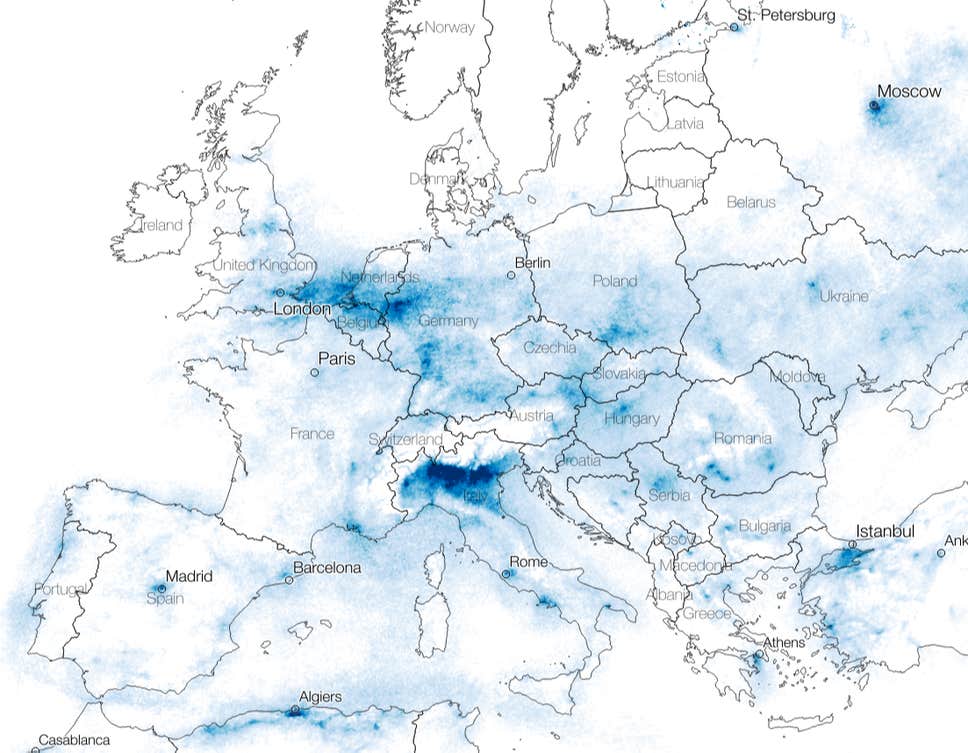The level of air pollution in London, Rome, Milan and Paris has fallen sharply since coronavirus lockdown measures have forced people indoors and off the roads.
Levels of particulate matter, which come from road transport and burning fuel, as well as nitrogen dioxide, which comes primarily from vehicle exhausts, are low across London.
The UK capital’s levels of ultra-fine particulate matter, known as PM2.5, are currently around half that would be normally recorded at this time of year, based on an average of measurements over the past five years, scientists say.
The data from the London Air Quality Network, analysed by the National Centre for Atmospheric Science, also shows that both pollutants have fallen by around a half since a peak in mid-February.
Analysis of nitrogen dioxide emissions measured by the European Space Agency’s Sentinel-5P satellite confirms that levels of the pollutants over London are significantly lower than in March 2019.
Meanwhile, European Environment Agency (EEA) data shows that air pollutant concentrations in Rome and Milan have dropped by 50 per cent, while a Paris air quality monitoring agency recorded up to a 30 per cent decline in pollution.
‘This is primarily a consequence of lower traffic volumes, and some of the most clear reductions have been in nitrogen dioxide, which comes primarily from vehicle exhaust.
‘However fine particles (PM2.5) have also reduced significantly.
Professor Lewis said it’s especially important to consider how PM2.5 levels have changed compared to what is normally seen at this time of year.
‘Air pollution is noisy, changing with weather and so on,’ he said.
‘It’s really best to compare where we are now against where we might have expected to be based on previous years.’
London Air Quality Network, a King’s College London project, comprises more than 100 continuous monitoring sites in the majority of London’s 33 boroughs.
The data shows that PM2.5 levels in the capital are currently about half those seen on average from 2015 to 2019, as measured in micrograms (one-millionth of a gram) per cubic meter air (µg/m3)
